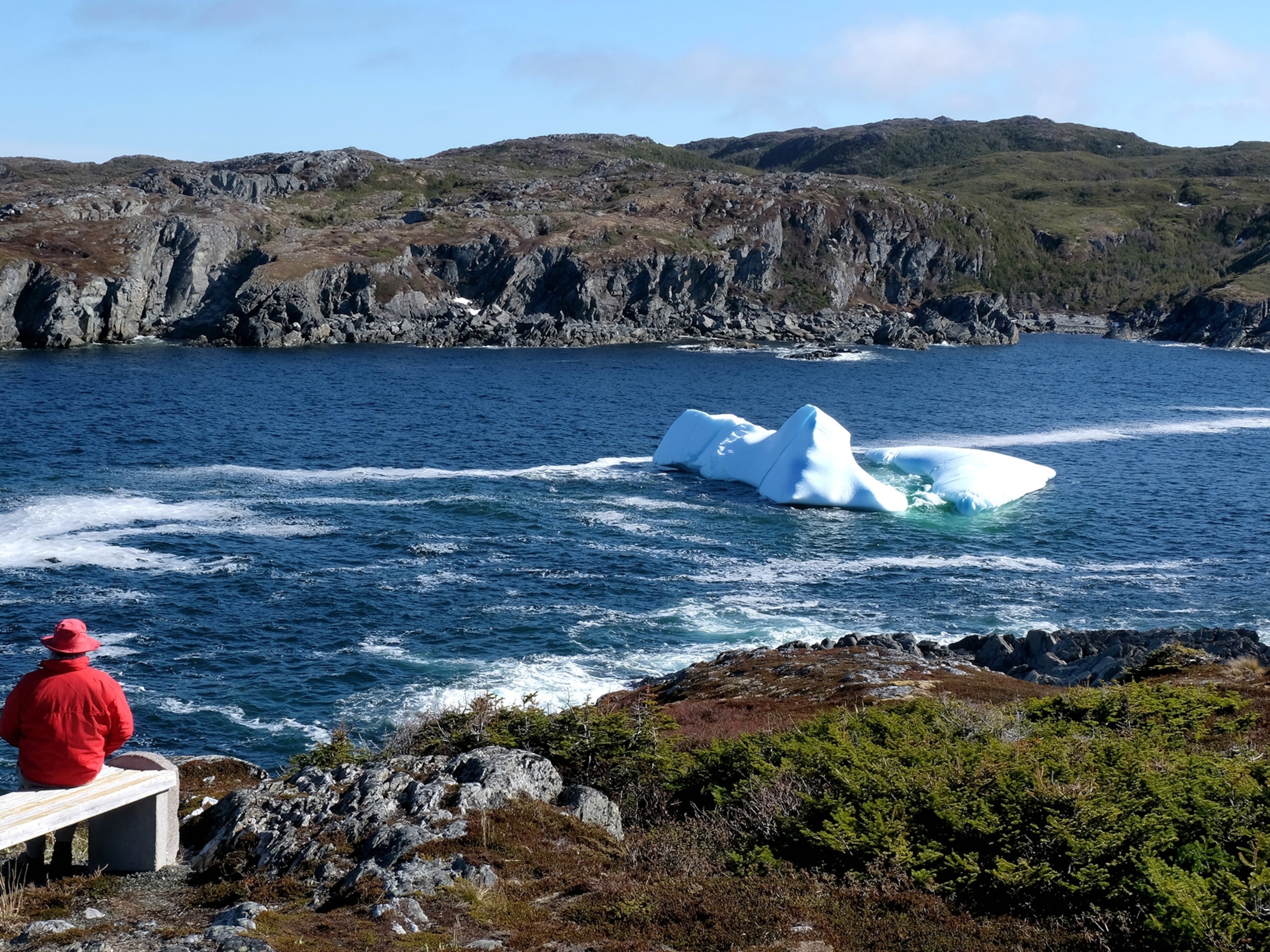
Newfoundland and Labrador Coast
Locals here talk about “Iceberg Alley,” where massive chunks of ice arrive as if they are seasonal houseguests. Breaking apart from the Greenland ice shelf, mountainous frozen sculptures off Newfoundland and Labrador’s eastern shoreline arrive every spring and summer, smashing into bays and slowly melting into the frigid North Atlantic waters. Visitors can watch these giant, floating sculptures—most of which are actually hidden below the water’s surface and are thousands of years old—by land, boat, or kayak.
When to Go: The best time to see icebergs is from mid-May to early June along the northeastern coast of the island of Newfoundland and from March to July off the coast of the mainland Labrador region. By late July/early August, icebergs still may be visible along Newfoundland’s northeastern coast from St. Anthony down to Twillingate. While it’s impossible to guarantee you’ll see icebergs, it pays to track their progress online before you visit.
How to Get Around: “It’s a different experience when you see an iceberg from land as opposed to getting up alongside and feeling its size and awesomeness,” explains James Gillard of Skipper Jim’s Boat Tours. Twillingate’s Iceberg Man Tours and St. Anthony’s Northland Discovery Boat Tours also allow passengers to view the floating shards from outboard and tuglike motorboats. Stan Cook Sea Kayak Adventures runs half-, full-, and multiday guided trips along the east coast. Public transit is limited in Newfoundland, so you’ll want to rent a car in the capital city, St. John’s, before heading up.
Where to Stay: Many visitors base themselves in iceberg hot spots like Twillingate and St. Anthony. Grenfell Heritage Hotel & Suites is a comfortable option in St. Anthony. In Twillingate, the centrally located Anchor Inn has 14 rooms, eight suites, and hometown favorite Georgie’s Restaurant. For real local flavor, try Georgie’s "cod 'n crab cakes" with a bottle of Newfoundland’s own Moose Joose or Krooked Kod tart berry wine.
What to Eat or Drink: Iceberg water is pure and free of contaminants, making it a worthy addition to a range of local beverages. Auk Island Winery produces tasty local berry wines, some with harvested iceberg water. Microbrewery Quidi Vidi’s Iceberg Beer, sold in a distinctive blue bottle, is particularly crisp. Or pick up a bottle of Iceberg Vodka. To add a fresh iceberg chill to any beverage, collect “bergie bits” from the shoreline.
What to Buy: Newfoundland’s best shopping is in colorful downtown St. John’s, known for its Jellybean Row collection of brightly painted Victorian row houses. Popular souvenirs include handmade hooked rugs, Labradorite jewelry, carved wooden bowls, boards, and spoons. Or bring home a commemorative Jellybean Row mailbox or plaque-mounted wall hanging from Jellybean Row Gallery.
Helpful Links: IcebergFinder.com, Twillingate Island
Fun Facts: The largest iceberg ever recorded in Canada weighed ten billion tons and was eight miles long. About 90 percent of icebergs remain unseen underwater, creating a particular hazard for kayakers, boats, and luxury cruise ships. Due to an iceberg’s constant instability, boats and kayakers keep plenty of distance.
Go Further
Animals
- This ‘saber-toothed’ salmon wasn’t quite what we thoughtThis ‘saber-toothed’ salmon wasn’t quite what we thought
- Why this rhino-zebra friendship makes perfect senseWhy this rhino-zebra friendship makes perfect sense
- When did bioluminescence evolve? It’s older than we thought.When did bioluminescence evolve? It’s older than we thought.
- Soy, skim … spider. Are any of these technically milk?Soy, skim … spider. Are any of these technically milk?
- This pristine piece of the Amazon shows nature’s resilienceThis pristine piece of the Amazon shows nature’s resilience
Environment
- This pristine piece of the Amazon shows nature’s resilienceThis pristine piece of the Amazon shows nature’s resilience
- Listen to 30 years of climate change transformed into haunting musicListen to 30 years of climate change transformed into haunting music
- This ancient society tried to stop El Niño—with child sacrificeThis ancient society tried to stop El Niño—with child sacrifice
- U.S. plans to clean its drinking water. What does that mean?U.S. plans to clean its drinking water. What does that mean?
History & Culture
- Meet the original members of the tortured poets departmentMeet the original members of the tortured poets department
- Séances at the White House? Why these first ladies turned to the occultSéances at the White House? Why these first ladies turned to the occult
- Gambling is everywhere now. When is that a problem?Gambling is everywhere now. When is that a problem?
- Beauty is pain—at least it was in 17th-century SpainBeauty is pain—at least it was in 17th-century Spain
- The real spies who inspired ‘The Ministry of Ungentlemanly Warfare’The real spies who inspired ‘The Ministry of Ungentlemanly Warfare’
Science
- Here's how astronomers found one of the rarest phenomenons in spaceHere's how astronomers found one of the rarest phenomenons in space
- Not an extrovert or introvert? There’s a word for that.Not an extrovert or introvert? There’s a word for that.
- NASA has a plan to clean up space junk—but is going green enough?NASA has a plan to clean up space junk—but is going green enough?
- Soy, skim … spider. Are any of these technically milk?Soy, skim … spider. Are any of these technically milk?
- Can aspirin help protect against colorectal cancers?Can aspirin help protect against colorectal cancers?
Travel
- What it's like to hike the Camino del Mayab in MexicoWhat it's like to hike the Camino del Mayab in Mexico
- Is this small English town Yorkshire's culinary capital?Is this small English town Yorkshire's culinary capital?
- This chef is taking Indian cuisine in a bold new directionThis chef is taking Indian cuisine in a bold new direction
- Follow in the footsteps of Robin Hood in Sherwood ForestFollow in the footsteps of Robin Hood in Sherwood Forest




